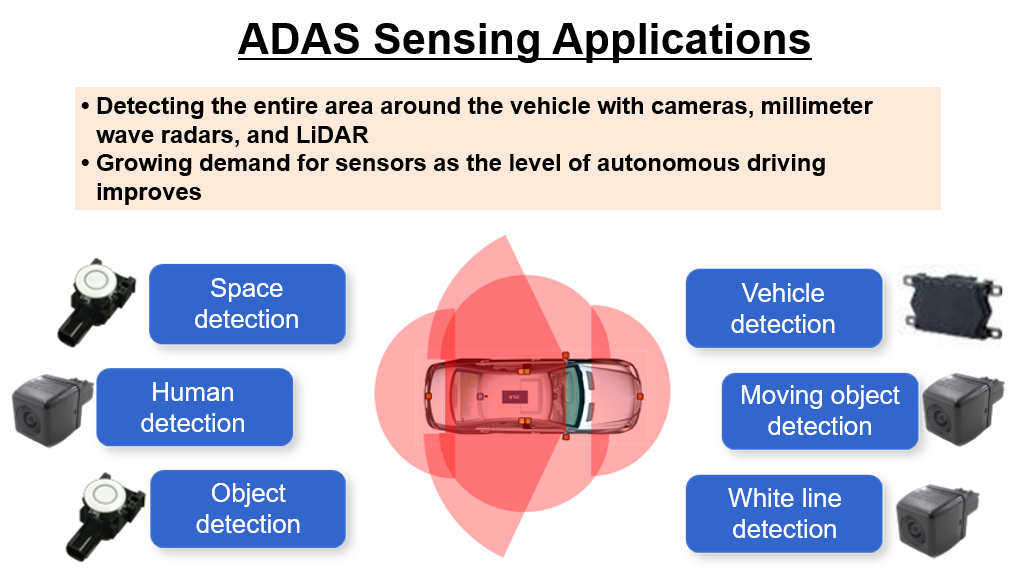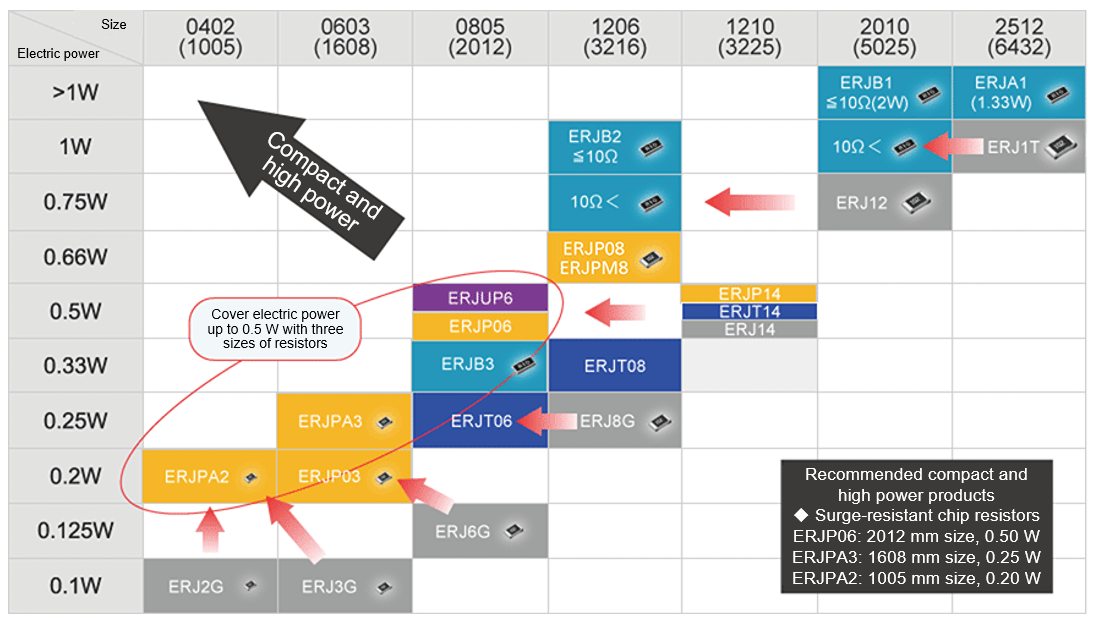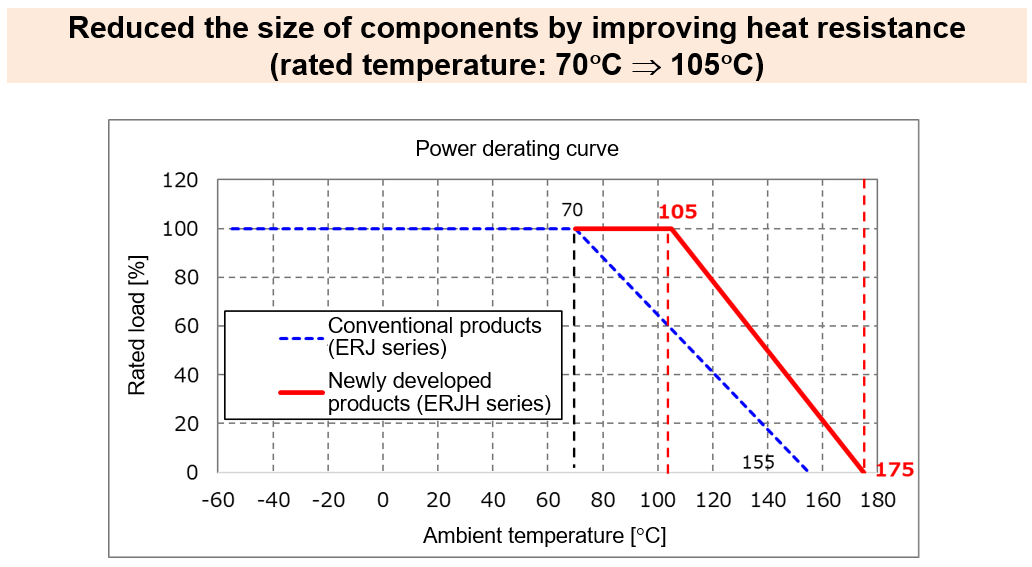Rectangular Chip Resistors for ADAS Applications
- Basic Knowledge of ESD Suppressors
2022-05-20
Autonomous driving (AD), once a technology of the future, is now rapidly being developed with rising expectations in countries with leading automobile manufacturers. As a result, AD is about to become a reality in the 2020s. The market for ADAS (Advanced Driver-Assistance Systems), which is an integration of essential technology for autonomous driving systems, is also expanding rapidly. One of the key components for ADAS is a high-precision and highly reliable rectangular chip resistor.
Autonomous driving and ADAS market
ADAS supports driving by detecting and recognizing the surrounding environment such as other vehicles, people, objects, and (road) lanes. Specific applications include in-vehicle cameras, millimeter-wave radars, and LiDAR.There are six levels of autonomous driving, ranging from 0 (no driving assistance) to 5 (fully autonomous driving), depending on the degree of driving automation. Currently, up to Level 2 technology (partial driving automation) has been implemented in mass-produced vehicles, with some vehicles undergoing the implementation of Level 3 technology (conditional automation).
In the automotive industry, the proportion of vehicles implementing Level 3 autonomous driving technology is expected to increase over the next few years. Naturally, the installation of ADAS applications, including Level 2 technology, is also expected to increase significantly. These changes in the situation will also influence the demand for electronic components from ADAS-related manufacturers.

Market changes and demand trends for electronic components
Panasonic believes that especially three factors - further improvements in safety, an increase in the number of mounted sensors, and higher-speed data processing - will become demand trends for mounted electronic components for ADAS applications.
First, with regard to the improvement of safety, it is believed that the service life of electronic components of ADAS used for a long time in an automotive environment will become important. Resistors are often used in sensing applications; however, until now, the initial tolerance of resistance value has been emphasized. In addition, increasing attention is now being paid to the smaller changes in resistance values over long-term use and the smaller impact on resistance value by temperature changes (TCR*1). The initial tolerance and TCR are indicated in the specifications of resistors. However, the "total tolerance (service life design)" is required, including the performance related to long-term reliability, which is not included in the specifications.
* 1 TCR: Temperature coefficient of resistance. The numerical value that expresses the rate of changes in resistance when the temperature changes. The unit is ppm/°C.
Next, the increase in the number of mounted sensors is based on the forecast of an increase in in-vehicle sensing applications to enable high levels of autonomous driving. When trying to install more sensing applications, it is necessary to reduce the size of sensing modules due to limited mounting space. Therefore, electronic components used in such applications are required to be smaller while maintaining the same performance.
The last requirement for higher-speed data processing results from an increase in the amount of data obtained from ADAS applications. Accordingly, SoCs (Systems on a Chip) that process such data are required to have higher performance. On the other hand, along with a decrease in the size of modules, there is a demand to reduce power consumption as much as possible for suppressing heat generation. As a result, the drive voltage of SoCs has become extremely low, therefore requiring higher than ever before precision of electronic components used in such low-voltage circuits.
Panasonic chip resistor product group that supports ADAS applications
Panasonic offers a lineup of high-precision chip resistors that meet these requirements from the ADAS market. There are two types of chip resistors, thick-film chip resistors, and thin-film chip resistors, depending on the difference in the structures resulting from the materials and manufacturing methods. In general, thick-film chip resistors are more cost-effective than thin-film chip resistors, while thin-film chip resistors are said to be superior in terms of precision (especially the rate of change in the resistance value per temperature).
By devising the structure, materials, and manufacturing process of chip resistors, Panasonic develops and sells both thick-film and thin-film chip resistors with higher precision than standard products of the same size, as well as products with higher rated power.
The "ERA*V" series thin-film chip resistors have achieved the following improvements: Greater tolerance to overloads through improvements in materials and design; improved contamination resistance through design innovations; and improved solder crack resistance through the provision of a thermal stress buffer layer.
The "ERA*V/K/P" series, which includes this "ERA*V" series, achieves ultra-high precision with an initial tolerance of ±0.05% and a TCR of ±10 ppm/°C and is provided in combination with features such as high reliability and high weather resistance.
* Please click here to refer to the details of the lineup of high-precision chip resistors.
With regard to chip resistors that respond to the trend of substrate downsizing, Panasonic offers compact and high-power products that are one size smaller than standard products and have twice the rated power. For example, the 2012-size "ERJP06" and "ERJB3" achieve a rated power of 0.5 W, while the 3216-size "ERJ8G" has a rated power of 0.25 W. Further, smaller products with the same rated power are also available. For example, the company provides the 1608-size "ERJPA3," which has a rated power of 0.25 W but is two sizes smaller than the "ERJ8G" with a rated power of 0.25 W.
* Please click here for details of the lineup of compact and high-power chip resistors.

There is also a demand from automotive application manufacturers for resistors that can be used in very high-temperature environments. Thin-film chip resistors and thick-film chip resistors basically generate heat when power is applied to them. This increases their temperatures and degrades their original performance. Therefore, it is required to reduce their power when they are used in high-temperature environments.
By developing new end-face electrode materials and resin materials, Panasonic has developed and provided high heat-resistant chip resistors, which raise both the temperature at which the rated power begins to drop and the upper-limit temperature at which they can be used by several tens of degrees compared to standard products. For example, when 0.1 W is required at 105°C, a 3216-size resistor is required in the case of a conventional product in consideration of the reduction in the rated power. However, a high heat-resistant chip resistor with a size of 1005, which is three sizes smaller, can meet such requirements.

Furthermore, a large amount of data, including data from sensing applications, is transmitted and received inside vehicles, thereby making in-vehicle data communication faster and faster. Electronic components referred to as ESD suppressors are used to protect circuits and ICs as static electricity measures and EMC (electromagnetic noise) measures for communication systems used for in-vehicle networks. Such networks include automotive Ethernet, CAN (Controller Area Network), and LVDS (Low voltage differential signaling). In addition to ESD suppressors, varistors and Zener diodes are also used for components commonly referred to as ESD countermeasure components. Panasonic provides ESD suppressors with extremely low capacitance. Since the capacitance of the ESD suppressors is very small, they have excellent features as ESD countermeasure products in the high-frequency range used for high-speed data communication.
Summary
With the advancement of autonomous driving technology and the popularization of EVs, the adoption of ADAS applications linked directly to safety is expected to advance rapidly in the future. Panasonic will support the expansion of autonomous driving technology and ADAS applications through the development and provision of electronic components with an eye on these trends.
Related product information
Related information
- Chip resistors that are smaller but which provide more advanced functions are now an important component in solving problems.
- Current Detection Chip Resistors for Responding to the Large Current and High Precision Requirements
- High Precision Chip Resistors that Promote High Performance, Safety Improvement, and Energy Saving
- Anti-sulfurated Chip Resistors That Have Achieved High Reliability by Adopting Gold-based Electrodes and High Palladium-Silver Alloy Electrodes
- Chip resistor’s failure phenomenon/mechanism and solutions (1)
- Chip resistor’s failure phenomenon/mechanism and solutions (2)
- Example of chip resistor adoption (1)– Reduction of the number of parts required and improvement of reliability through the adoption of compact, high withstand voltage, high-precision chip resistors –
- Example of chip resistor adoption (2)
